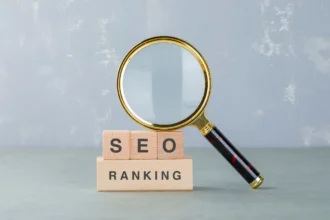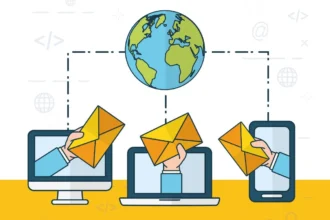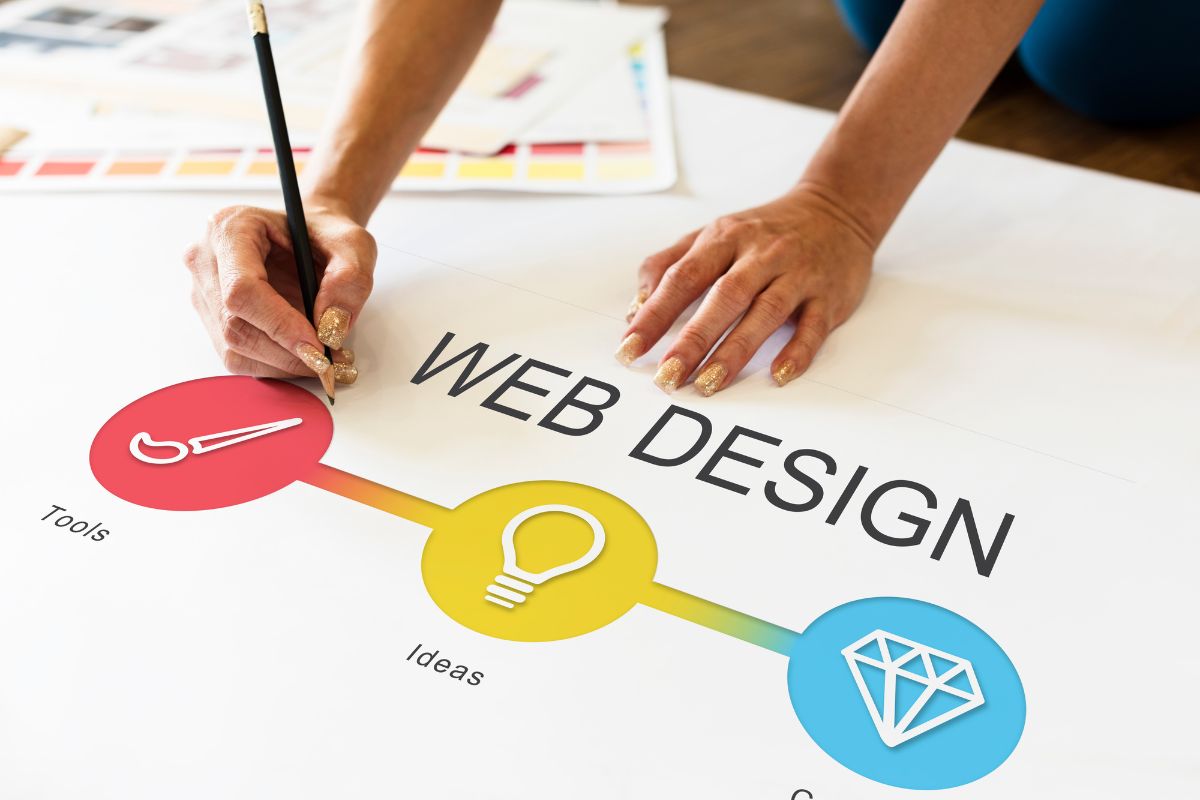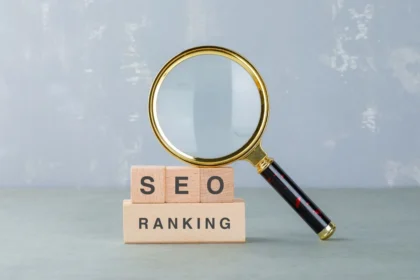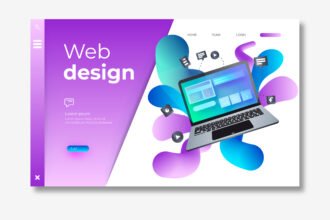In today’s digital world, a website is often the first interaction a customer has with your brand. But what is website design, really? It’s a common question with a surprisingly deep answer with different views by different people. Far more than just arranging colors and text, website design is the comprehensive process of planning, conceptualizing, and arranging content intended for the internet. It combines visual aesthetics (what it looks like) with usability (how it works) to create a seamless user experience. Think of it as the digital architecture for your brand’s home online. In my years of building websites for clients and myself, I’ve seen firsthand how a great design can transform a business. In this guide, I’ll break down every component that answers the question, ‘What is Website Design?’, from the foundational elements to the process professionals use to build effective, beautiful websites.
What You’ll Learn
Throughout this article, we will explore the core disciplines that make up website design, the key elements every effective site needs, why it’s so crucial for success, the professional design process, and what you can expect to invest.
The Core Disciplines
To truly grasp what website design is, you first have to understand that it’s not a single skill but a combination of several distinct disciplines. When I first started learning website design design in 2013, I thought it was all about visuals, but I quickly learned that what’s “under the hood” is just as important. These three core disciplines are the pillars of modern web design.
User Interface (UI) Design: Crafting the Visuals
User Interface (UI) design is what most people think of when they hear “website design.” It’s the look and feel, the presentation, and the interactivity of the site. UI design covers all the graphical elements a user interacts with – the buttons they click, the text they read, the images, sliders, and entry fields. A good UI designer focuses on creating a consistent and aesthetically pleasing visual language. This includes selecting a color scheme that reflects the brand, choosing readable and appropriate typography, and ensuring there’s enough spacing to make the layout feel uncluttered. The goal of UI is to create a beautiful and intuitive surface that is a joy for people to look at and use.
User Experience (UX) Design: Making It Easy to Use
If UI is the look, User Experience (UX) is the feel. UX design is the process of creating a website that is incredibly easy, logical, and efficient to use. It answers the user’s biggest questions: Can I find what I’m looking for quickly? Does this website make sense? Does it help me accomplish my goal without frustration? A UX designer is an advocate for the user. They conduct research to understand user behavior, create logical sitemaps (information architecture), and design user flows that guide people through the site effortlessly. I’ve seen projects with stunning visuals fail because of poor UX. This is the heart of effective website design; without it, even the most beautiful site is just a digital decoration.
Responsive Design: Ensuring It Works Everywhere
Not too long ago, you only had to design for a desktop computer screen. Today, that’s unthinkable. Responsive design is the practice of building a website that automatically adapts its layout and content to fit the screen size of any device – desktops, tablets, and smartphones. This is a non-negotiable standard in today’s mobile-first world. A responsive website ensures that every user has a great experience, whether they’re browsing on a large monitor at home or on their phone while waiting in line for coffee. Search engines like Google also prioritize mobile-friendly websites, making responsive design essential for both usability and SEO.
4 Key Elements of Effective WordPress Website Design
Now that we understand the disciplines, let’s look at the tangible building blocks. When I start a new project, I focus on how these key elements work together to tell a cohesive story. Answering “What is Website Design?” means understanding how these parts form a functional whole.
Visuals & Aesthetics: The First Impression
You only get a few seconds to make a good first impression. A website’s visuals are the most immediate way to capture attention and communicate a brand’s personality. This includes a strategic color palette that evokes the right emotions, high-quality imagery and videos that tell a story, and consistent branding with a clear logo and fonts. A visually appealing site feels professional and trustworthy.
Navigation & Structure: The Digital Roadmap
Great navigation is like good signage in a physical store – it tells people where they are and how to get where they want to go. This involves an intuitive menu that is easy to understand, a logical page hierarchy, and a clear information architecture. A user should never feel lost on your site. A key part of answering “What is Website Design?” is understanding how to structure information so users can navigate it effortlessly.
Content: The Reason People Visit
Design exists to present content in the most effective way possible. The content itself – the text, articles, product descriptions – is the reason people come to your site. Good website design focuses on readability with clean typography and plenty of white space. It also uses a clear content hierarchy – think headings, subheadings, bullet points, and bold text – to help users scan the page and find the information they need quickly.
Calls-to-Action (CTAs): Guiding the User
What do you want a user to do on your website? A Call-to-Action (CTA) is an instruction, usually a button or link, that prompts the user to take a specific action. Examples include “Sign Up Today,” “Download the Guide,” or “Shop Now.” Effective CTAs are visually prominent, use action-oriented language, and are strategically placed to guide the user through their journey, turning a passive browser into an active customer.
Why Good Website Design is Important
Understanding what website design is only matters if you understand why it’s important. A website is not just a digital brochure; it’s a powerful business tool. In my experience, investing in good design is one of the highest-return activities a business can undertake.
It Builds Trust and Credibility
A modern, professional, and well-functioning website signals that there is a legitimate and trustworthy business behind it. Outdated designs, broken links, or a confusing layout can make potential customers feel uneasy and question your credibility. Your website is often your first – and sometimes only – chance to prove you are a professional.
It Improves Search Engine Rankings (SEO)
Search engines, especially Google, want to provide their users with the best possible experience. They favor websites that are fast, secure, mobile-friendly, and easy to navigate. These are all direct products of high-quality website design and technical SEO. A well-designed site is inherently a more SEO-friendly site.
It Increases Conversions
Whether a “conversion” for you is a sale, a lead, or a newsletter signup, good design is the key to making it happen. By creating a clear path with intuitive navigation and compelling CTAs, a good design removes friction and guides visitors toward accomplishing the goals you have set for the website.
It Sets You Apart from the Competition
In a crowded digital marketplace, a unique and memorable website design can be a powerful differentiator. It helps you stand out, tells your brand’s unique story, and creates a lasting impression that can turn a one-time visitor into a loyal customer.
5-Steps To A Professional Website Design Process
Professional website design isn’t a chaotic mess of creativity; it’s a structured process. Following these steps ensures that the final product is not only beautiful but also strategic and effective. This is the same process I follow for all my projects.
- Have A Unique Strategy – The first step is always about understanding the “why.” This involves defining the website’s goals, identifying the target audience, analyzing competitors, and defining the project scope. This strategic foundation informs every subsequent decision.
- Have A Wireframing and Prototyping – Before any visual design happens, I create a blueprint. A wireframe is a simple, low-fidelity layout that focuses on the structure, content placement, and user flow. It’s all about function over form at this stage, ensuring the skeleton is solid before we put the skin on.
- Build Visual Design and UI – Once the blueprint is approved, the fun begins. This is where I apply the branding, color palette, typography, and imagery to create high-fidelity mockups of what the final website will look like. This stage brings the strategic wireframes to life with a beautiful and engaging UI.
- Development and Coding – Here, the static visual designs are turned into a functioning website. This can be done by writing code from scratch (HTML, CSS, JavaScript) or by using a Content Management System (CMS) like WordPress. The developer ensures the design is translated perfectly into a responsive, interactive experience.
- Testing and Launch – Before the website goes live, it undergoes rigorous testing. I check for bugs, test it on multiple browsers and devices, check for broken links, and ensure all forms and buttons work correctly. After a final review and approval, the website is launched and made accessible to the world.
How Much Does Professional Website Design Cost?
This is one of the most common questions I get, and the honest answer is: it depends. The cost of website design varies widely based on the complexity, features, and who is building it. Here’s a general breakdown for 2025.
Website Builder / DIY Route: The Budget Option
Using platforms like Squarespace, Wix, or a basic WordPress setup with a pre-made theme is the most affordable option. It’s great for simple portfolios or blogs. Cost: $100 – $500/year.
Freelancer or Small Agency: The Small Business Standard
This is the most common route for small to medium-sized businesses that need a professional online presence. This typically involves a custom-designed theme or a semi-custom site with more strategic input. Cost: $3,000 – $15,000 (one-time).
Large Agency / Complex Custom Build: The Enterprise Level
For large businesses, e-commerce stores with thousands of products, or websites requiring complex custom features (like a booking system or social network), you’ll need a team of specialists. Cost: $15,000 – $100,000+ (one-time).
Conclusion
Ultimately, the answer to ‘What is website design?’ is that it’s the crucial bridge between your business goals and your online audience. It’s the art and science of creating a digital experience that is not only beautiful but also intuitive, effective, and valuable. From the user’s journey to the final click of a button, every element matters. By understanding these core principles, you are now equipped to create or commission a website that truly works.
Frequently Asked Questions
What is the most important part of website design?
Answer: While visual appeal is important, most experts agree that User Experience (UX) is the most critical part. If users can’t find what they need or the site is confusing to use, they will leave, regardless of how beautiful it looks. A good design must be functional first.
Can I do my own website design?
Absolutely. Platforms like Squarespace, Wix, and WordPress with page builders like Elementor have made DIY website design more accessible than ever. It’s a great option if you have more time than money, but be prepared for a learning curve to achieve a professional result.
How is website design different from web development?
Website design focuses on the visual look and user experience – what the user sees and interacts with (UI/UX). Web development is the technical process of building and maintaining the website’s functionality using code. In simple terms, designers create the blueprint and visuals, while developers build the working house from those plans.
What makes a website design “good”?
A good website design is:
- User-Centric: Easy to navigate and understand.
- Responsive: Works perfectly on all devices.
- Fast: Loads quickly.
- Visually Appealing: Reflects the brand’s identity professionally.
- Goal-Oriented: Guides users to take specific actions (conversions).
References
- Nielsen Norman Group, “The Definition of User Experience (UX)”
- Google Developers, “Responsive web design basics”
Ready to take your online presence to the next level? Sign up for our newsletter for more expert tips on digital marketing and website design: https://gdacompany.com/newsletter/



